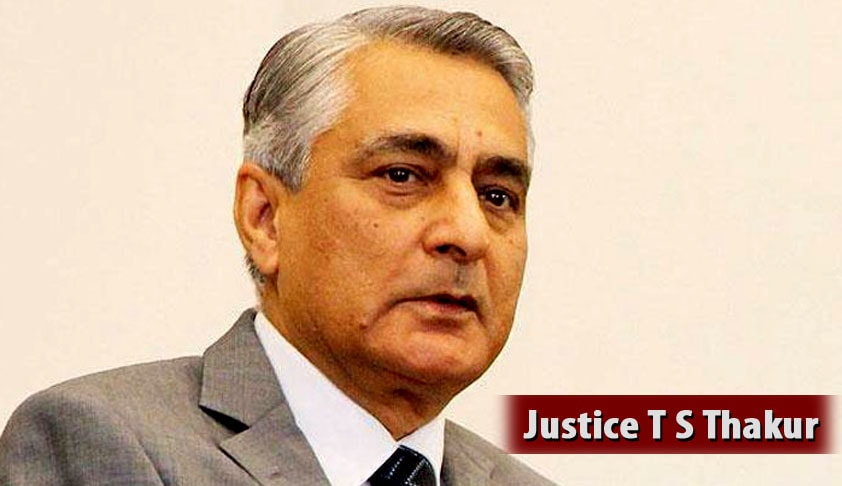Reflections on CJI’S speech: Going beyond judicial appointments for clearance of cases
Adv. Kaleeswaram Raj
2 May 2016 6:10 AM
Years ago, Justice Krishna Iyer was received by almost all the judges of the Allahabad High Court. Looking at the huge crowd of around 100 judges, Justice Iyer wondered “this is not court; this is population”. But the Allahabad High Court had the highest average pendency of case in India of 1337 days, according to a study by DAKSH, a Bengaluru based organisation. The fact is that even...
Years ago, Justice Krishna Iyer was received by almost all the judges of the Allahabad High Court. Looking at the huge crowd of around 100 judges, Justice Iyer wondered “this is not court; this is population”. But the Allahabad High Court had the highest average pendency of case in India of 1337 days, according to a study by DAKSH, a Bengaluru based organisation. The fact is that even when the biggest High Court in India had 90 judges, in January 2014, it was running short of 70.
The Chief justice of India (CJI) had reason to be disgruntled when 434 vacancies of High Court judges remained unfilled. The phenomenal docket explosion in the Supreme Court also is perturbing. The CJI said that as of now, there are 60,260 cases pending before the Supreme Court. The High Courts in India, as a whole, have an incredible 38.68 lakhs of cases awaiting disposal. The backlog of all courts including the lower courts escalates to 3 crores. The subordinate judiciary has 4580 vacancies across the country, awaiting the umpires.
The Law Commission’s recommendation (1987) to increase the judges’ strength is honoured only in its breach. The resolution demanding appointment of retired judges of the High Court for clearing the cases by invoking Article 224A of the Constitution also is remarkable.
The CJI was concerned only with judges’ strength which is only one constituent of the court performance index, a concept now well accepted worldwide. Maria Dakolias, in a well-researched paper (Yale Human Rights and Development Journal, vol.2 issue 1, Article 2, 18.2.2014) puts it vividly: “judicial administration is measured by the concept of efficiency, access, fairness, public trust and judicial independence.” Judges’ strength is not the sole or ultimate criterion that determines the quality of the institution. Maria’s study tells that only France and Peru have a clearance rate of more than 100% which means that they “resolve more cases per year than are filed.” The heaviest workload is borne by the courts in Chile where each judge has to decide 5000 cases per year. Interestingly, “Chile has an impressive clearance rate” despite the per capita burden on the bench, the study says. The menace of docket explosion finds an answer in her paper which has a strong empirical foundation –“If the courts are well managed, the increase in filings may even result in cases being resolved more quickly”-a lesson that India needs to learn.
The judges have the primary role in judicial management. Questions about quality need not be always resolved by quantitative inputs to the Bench. There were instances where at least a few judges indefinitely delayed pronouncement of judgments after the final hearing. The Supreme Court had to deprecate such “practice” in Anil Rai v. State of Bihar (2001). Also, there were illustrative cases where a judge had authored only seven reported judgments over a period of three and half years. Such individual aberrations obviously pose serious questions relating to quality rather than quantity.
Judicial appointments
Quality is ensured by way of objectivity, independence and transparency in the process of judicial appointments. A fair appointment process is a condition precedent for a passable and efficient judiciary in any working democracy. India has a failed system for appointment of judges which neither the court nor the government could effectively rectify. The National Judicial Appointment Commission(NJAC) judgment of 16.10.2015 has struck down the 99th amendment to the Constitution together with the NJAC Act and revived the ill-famous collegium system where, again in the words of Justice Krishna Iyer, “no principle is laid down, no investigation is made, and a sort of anarchy prevails.”(Judicial appointments and disappointments, 2012).
The CJI did not lament over the slippage in the appointment process about which the entire nation had expressed concern during the post-decisional hearing in the NJAC case. In spite of the initial promises for reforms, when the real issues were placed before the apex court by way of legal submissions and public opinion that ran into about 11,500 pages, the Court chose to revive status quo ante with some cosmetic rhetoric on reformation. The tall talk on eligibility practically got reduced to prescription of age. The high decibel demand for transparency just meant publication of judicial vacancies in the official website of the courts without even providing any opportunity to the ordinary mortals in the system even to apply. The secretariat, which the legal fraternity fantasised as a prestigious establishment for merit evaluation will be brought down to a data collection centre due to the undemocratic NJAC judgments (2015).
The tussle between the judiciary and the executive on account of the unwillingness on either side to give way to a better and independent appointment commission continues to be a tragedy in Indian political and constitutional history. At the bottom-line of the Chief Justice’s speech, one may even find a judiciary, which is less assertive and less independent. This predicament is all the more disturbing given the capitalist characteristics prevailing in the Indian courts, especially in the higher judiciary.
The CJI spoke less about the common man who is fenced out of the judicial system. On reading Nick Robinson and Marc Galanter, one would be baffled to find how India’s “grand advocates” in the Apex Court and the High Courts charge the litigants. Exorbitant money is required for placing a ‘star lawyer’ with a ‘face value’ in the Supreme Court. On the other end, about one third of the litigants are unable to enjoy bail due to financial or related constraints.
In a classic instance of investigative journalism, the Reuters established that the entire legal system in the U S Supreme Court is dominated by a handful of elite lawyers mainly representing the corporate. (The Echo chamber, 2014.)
We follow suit. And no tears!
The writer is a lawyer in the Supreme Court and Kerala High Court. This article was first published in Deccan Herald dated 28.4.2016 and published here with special Permission from the author.
Disclaimer: The opinions expressed within this article are the personal opinions of the author. The facts and opinions appearing in the article do not reflect the views of LIVELAW and LIVELAW does not assume any responsibility or liability for the same.


